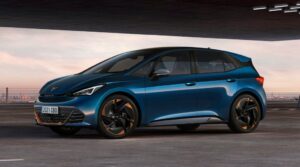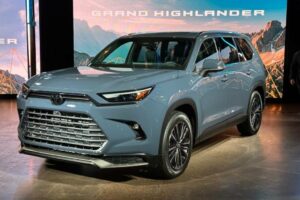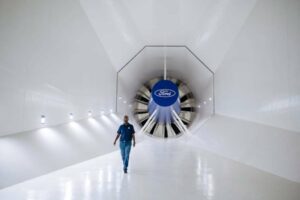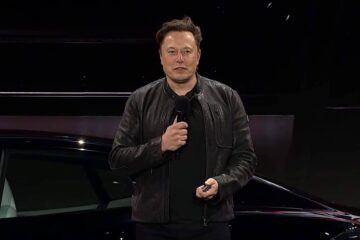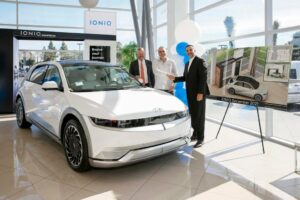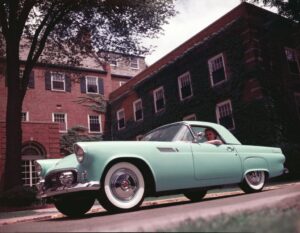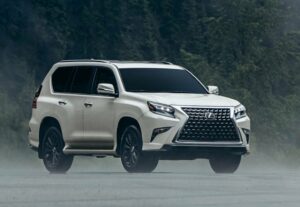Kia Motors is looking to be more than merely an automaker.
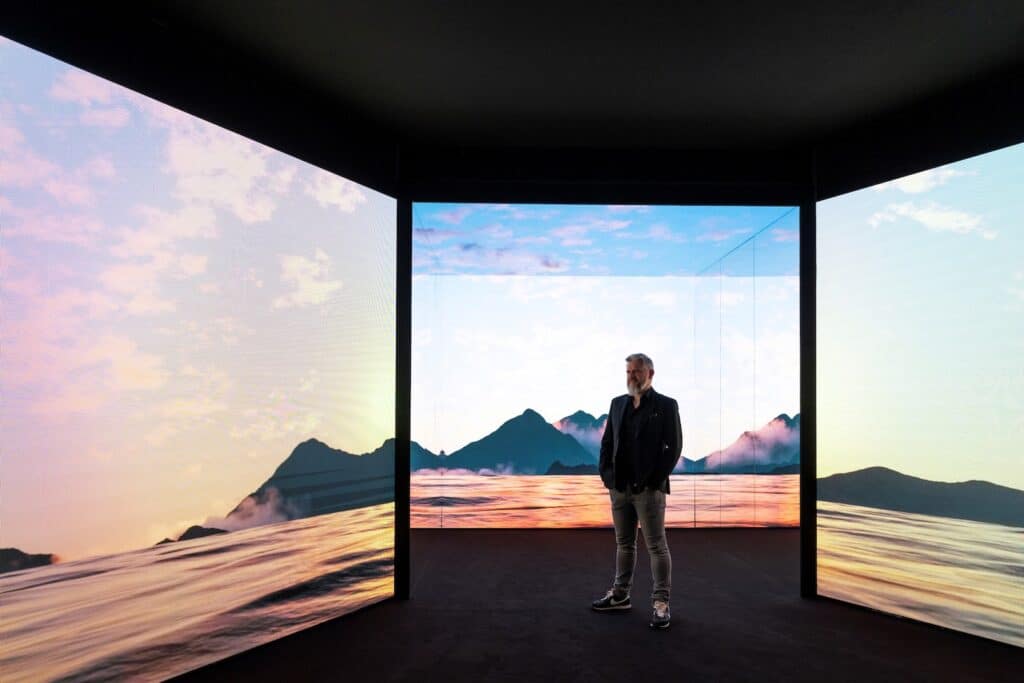
The company, which has rebranded itself as a mobility supplier, landed at the 2023 Milan Design Week with an exhibition two years in the making.
Located at the Museo della Permanente in Milan, the exhibition takes visitors through five rooms, each possessing an immersive quality meant to signify what’s inherent in the design of Kia’s automobiles: technology, nature, joy, progress and serenity. Interestingly, there are no cars being shown; this is a pure design exercise. But it functions as a way for the brand to elevate its approach to carmaking.
To get a sense of the exhibit and what it means, we traveled to Milan and sat down with Jochen Paesen, Kia’s vice president of interior design, to get a sense of the future of the exhibition and what it means for the brand.
Jochen Paesen: If you look at this exhibition, there’s no automotive. We talk a little bit about automotive, but it’s really on a different level. Here, “Opposites United” is an exhibition. But for us, it’s been our way to actually say, can we can we find solutions that come from design, not styling, but good design. Can we bring on a higher level we have here five pillars, but just on a high level, can we bring opposites together? Can we bring thoughts together, things together that we didn’t think fit? And that actually brings us more questions than answers, but those questions will then maybe show us a different perspective. And I think that for us, I think that’s a really nice way to go. And our decision-makers allow us to do this, they have trust that we will out of that process actually come up with something new, something different and they expect that.
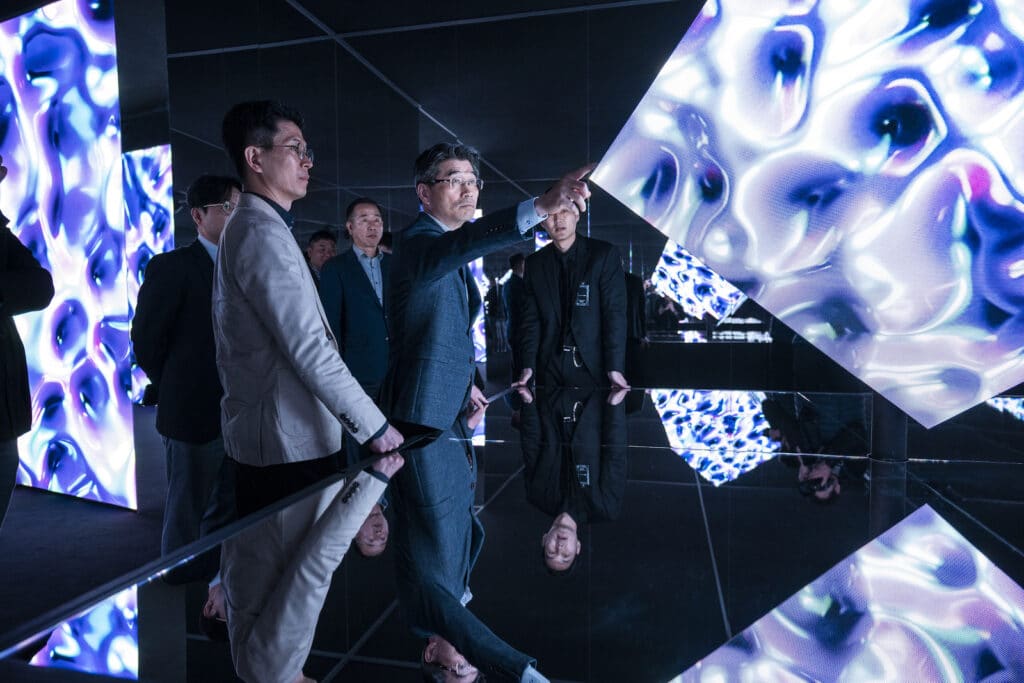
All of us in the industry have the same opportunities, the same issues: electrification and autonomous technology coming into the car. We live in technology, we don’t even think about it anymore. But how do you bring that into the car? You know, you have two worlds outside the car and your digital space inside the car. And it’s not the same; It’s not as good, not as easy, not as convenient. So how are we in the future going to actually bring that to a better level and all of us in the industry have the same questions, the same potential success that we can achieve, but there’s no right answer.
I don’t think they expect us to doesn’t have to be perfect or it doesn’t. But they expect it to be useful to and I think as long as we can show that it’s useful, it helps take us to another level takes as a brand.
The Detroit Bureau: So how does Opposites United guide your design?
JP: As well as you know, we have studios in the U.S., Europe, China, Korea, and obviously, they all speak different languages. They all have different experiences. They all have different daily surroundings. But when you talk about opposites, that’s a common denominator. Everybody has their version of opposites of things that are juxtaposed of things that clash of things that are imbalance, right. And so that’s as a design language, or as a design, that’s actually a really nice way to have continuity.
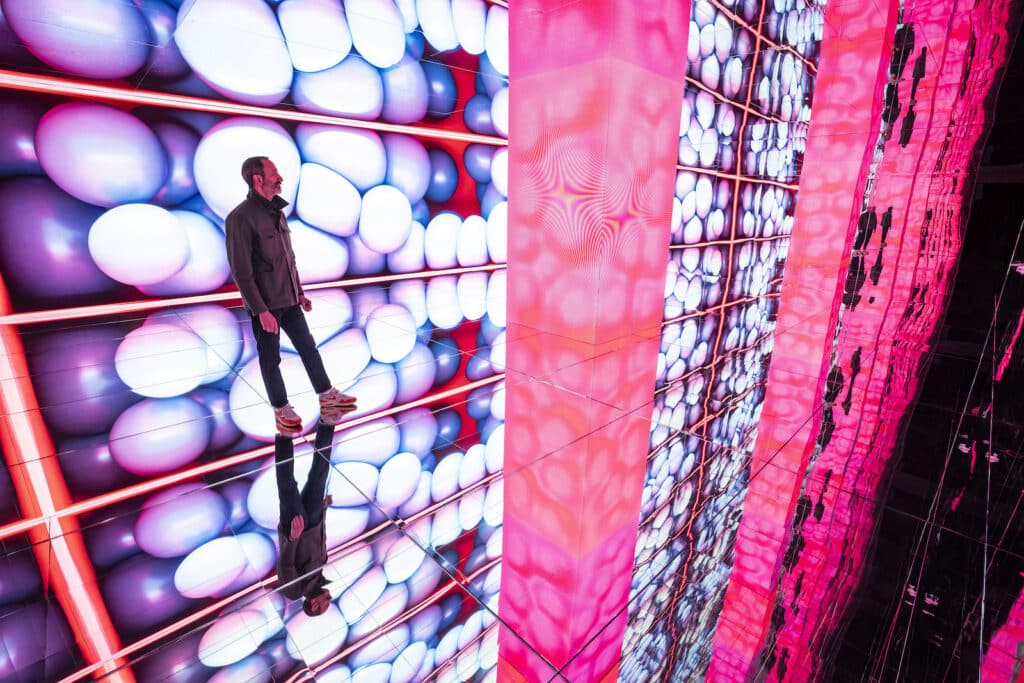
TDB: What do you what do you feel this show does for Kia? You’re not showing product, you’re showing something theoretical, fun, yet intriguing. What do you feel this does for the brand that so many other automakers have missed? Who is the exhibition for?
JP: To be honest, we’ve rebranded; we’re a different company. In the future, we want to be mobility provider, which you hear a lot. But I think it goes beyond this exhibition itself. We want to question ourselves. When people come in here, we want them to be surprised. And I think that is, for us, quite important. It makes them think of Kia in a different way. Where before they didn’t even think about us, they discover that we’re actually thinking much more deeply about design and creativity. As a designer, a product needs to have great functionality, but if it doesn’t connect to you emotionally, good luck. And I think that’s what hopefully this will do.
We’ve been working on products that are coming in the next two, three, four years and they’re going to be different. And it’s going to be different. And so I don’t want to say it’s a way to prepare people for that, but it goes hand in hand.
TDB: It does seem to be setting the stage for a bold design direction that’s not like what you’re doing today.
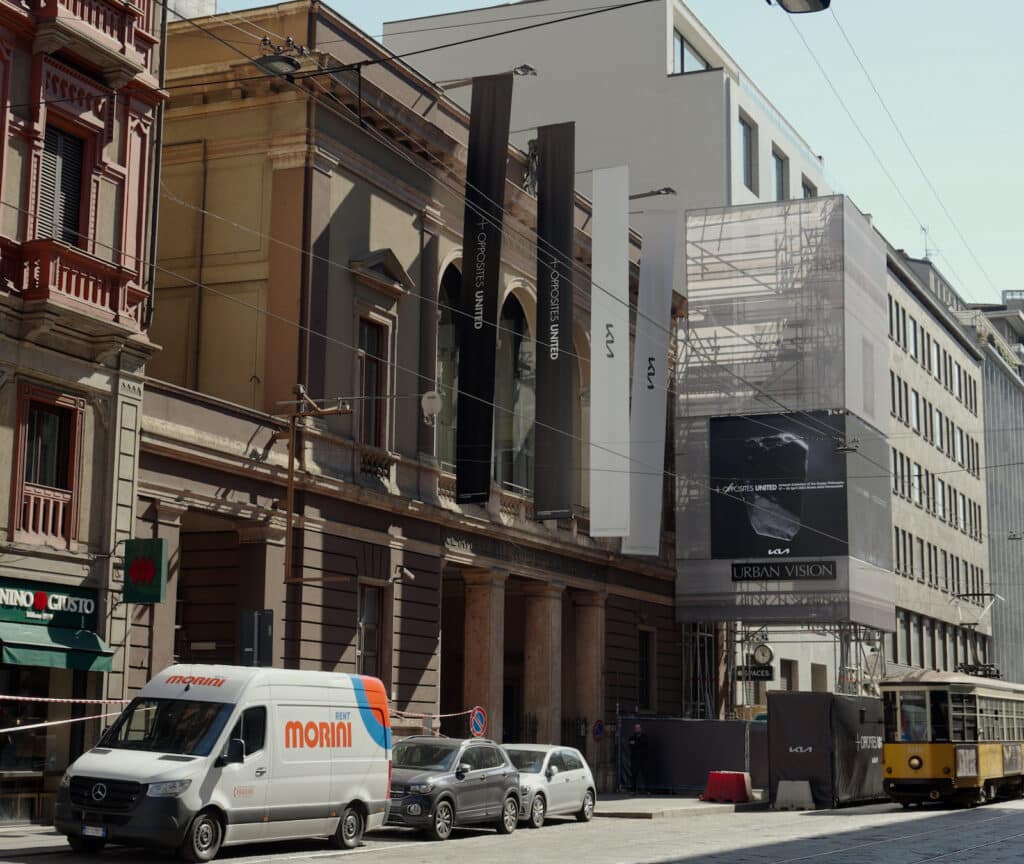
JP: When we came to the idea of electrification, we have new opportunities. We didn’t want to layer on top of what we already have. We wanted to take this as an opportunity to say, yeah, we have physically a lot of space, but visually, how can it just breathe and give you a little bit of this spacious feel.
And so that’s where the inspiration came from going away from what’s been done a lot in recent years, this cocooning. In a home, you wouldn’t go for wall-to-wall furniture and shelves. It needs to be in balance. And so that’s why the theme that we selected was individual elements that can live on their own; you could take the IP out, and it’s a beautiful element in itself. It doesn’t need anything else. But when you put it together, it feels like it doesn’t need anything else because it can stand alone.
TDB: It’s very funny though, because modern interiors have a verticality because the center console is everything. And now, because of technology, everything’s going horizontal again. And if you go back to say, the 1960s and ’70s, the cabins are very horizontal. And we’re going back to that. So the whole thought of this as a third room is like getting into a car from 1950. That’s a couch you’re sitting on and we’re getting back to that.
JP: It’s actually interesting that you make the link because it’s very much like that, except that we have new factors that go into play that make for a fresh approach because the technology underneath has changed.
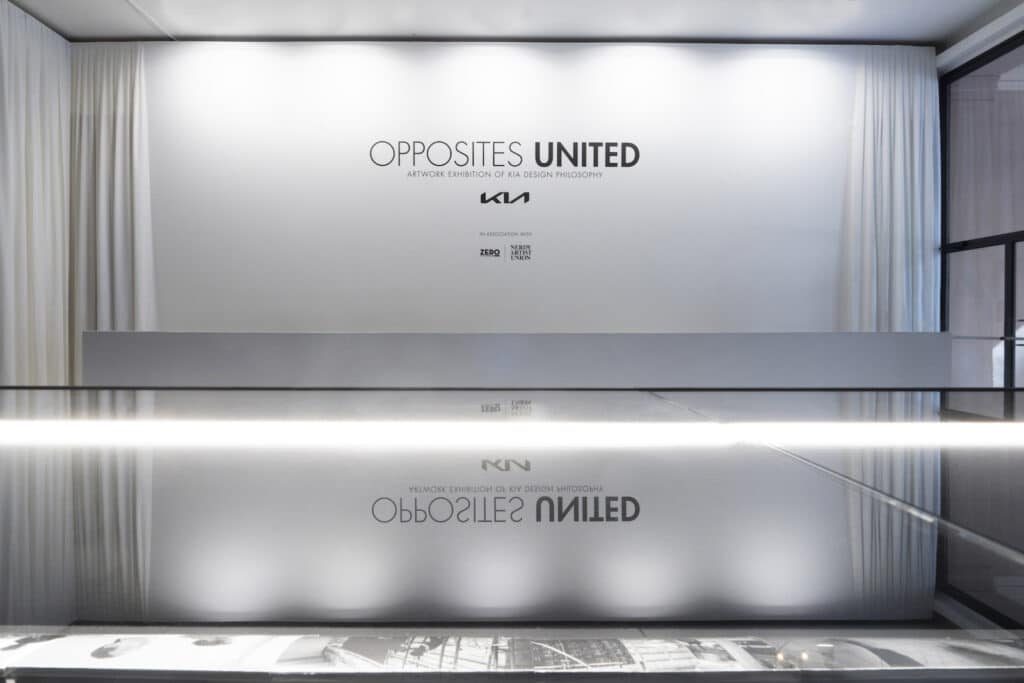
So in the past, let’s say 15 years ago, we were designing around this big transmission tunnel, and that was part of the character. Now we have the opportunity to actually use that same space for storage for different things. But that’s also why it is really important that the screen sits quite high. We still have some physical buttons that the marriage lives in a nice sort of combination of digital and physical, but they are reduced, they are further up when I’m driving, I don’t need to look down and allows us to free up space. It gives us flexibility and it’s very consequential in that sense, as that creates a new aesthetic.
TDB: I think people are surprised by how much space there is in newer cars and it’s like, well, the space was always there. There’s this thought that that console had to be there. And it’s great to see design evolving and rediscovering using the whole space and not just assuming, well that center part has to be filled with something.
JP: Right and in the very near future, we will have features on demand, things that are convenient things you might need in the summer that you don’t need in the winter. It might be a feature that you pay for as long as you need it. So imagine the positive side of that; you will not need physical buttons because you might sometimes have it and sometimes not. So there are certain things that digitization will be a great thing for you, couple that with all sorts of future scenarios, future possibilities, there’s a lot of potential.
But there are other things that are just simply better as physical buttons, and they will be things that we always use. I think generally in the industry, where nobody has the perfect answer yet. To be honest, it’s one of the most important things that we as interior designers are working through, and there are so many companies that are not getting it right. I’m not saying we are going to look right, just yet, either. But we take that very, very seriously because ultimately, in the future, you’re going to have more functions, more possibilities.
TDB: But you can use voice activation instead of buttons.
JP: I see voice as a smaller part of AI and AI being that the car is intelligent. It knows which temperature you like, it senses which temperature you’re at, so you don’t even need to set your temperature or change the temperature one degree because actually, the car is constantly monitoring that. In 10 years’ time, you’ll say do you remember we used to put the temperature two degrees ourselves right? In the future that’s probably not even necessary.
- SEO Powered Content & PR Distribution. Get Amplified Today.
- PlatoAiStream. Web3 Data Intelligence. Knowledge Amplified. Access Here.
- Minting the Future w Adryenn Ashley. Access Here.
- Source: https://www.thedetroitbureau.com/2023/04/qa-jochen-paesen-kia-motors-vice-president-of-interior-design/
- :has
- :is
- :not
- :where
- $UP
- 10
- 15 years
- 2023
- a
- About
- about IT
- Achieve
- Activation
- actually
- ago
- AI
- All
- allows
- alone
- already
- also
- always
- an
- and
- Another
- answer
- answers
- anymore
- approach
- ARE
- around
- AS
- At
- automakers
- automobiles
- automotive
- autonomous
- Autonomous technology
- away
- back
- Balance
- BE
- beautiful
- because
- been
- before
- being
- Better
- Beyond
- Big
- Bit
- bold
- brand
- BREATHE
- bring
- Brings
- Bureau
- but
- by
- CAN
- car
- cars
- celebrates
- Center
- certain
- change
- character
- China
- Clash
- combination
- come
- coming
- Common
- Companies
- company
- Connect
- Console
- constantly
- Convenient
- could
- Couple
- creates
- creativity
- daily
- decision-makers
- Degree
- Demand
- Design
- Designer
- designers
- designing
- different
- digital
- digital space
- digitization
- direction
- discover
- do
- does
- Doesn’t
- doing
- done
- Dont
- down
- driving
- each
- easy
- either
- element
- elements
- ELEVATE
- Europe
- Even
- everything
- evolving
- examine
- Except
- executive
- executives
- Exercise
- exhibit
- exhibition
- Exhibition Space
- expect
- Experiences
- factors
- Feature
- Features
- filled
- Find
- fit
- Flexibility
- For
- four
- Free
- fresh
- from
- fun
- functionality
- functions
- funny
- further
- future
- generally
- get
- getting
- Give
- gives
- Global
- Go
- Goes
- going
- good
- great
- guide
- had
- hand
- Have
- head
- hear
- helps
- here
- High
- higher
- Home
- Hopefully
- Horizontal
- How
- HTTPS
- i
- idea
- if
- imagine
- imbalance
- immersive
- important
- in
- individual
- industry
- inherent
- Inspiration
- instead
- Intelligent
- interesting
- interior
- into
- IP
- issues
- IT
- ITS
- itself
- jpg
- just
- Kia
- Know
- korea
- language
- Languages
- layer
- Level
- like
- LINK
- little
- live
- Lives
- Long
- Look
- looking
- Lot
- luck
- make
- MAKES
- Making
- many
- max-width
- means
- merely
- might
- MILAN
- mobility
- Modern
- monitoring
- more
- most
- Motors
- much
- Nature
- Near
- necessary
- Need
- needs
- New
- next
- no
- now
- of
- on
- ONE
- opportunities
- Opportunity
- or
- Other
- our
- out
- outside
- own
- part
- past
- Pay
- People
- perfect
- perspective
- philosophy
- physical
- Physically
- plato
- Plato Data Intelligence
- PlatoData
- Play
- positive
- possibilities
- potential
- Prepare
- president
- probably
- process
- Product
- Products
- Progress
- provider
- put
- quality
- question
- Questions
- really
- recent
- Reduced
- remember
- Room
- Rooms
- s
- same
- saying
- scenarios
- Screen
- see
- selected
- sense
- serenity
- set
- setting
- shelves
- show
- shown
- simply
- sits
- Sitting
- smaller
- So
- Solutions
- some
- something
- Space
- speak
- Stage
- stand
- Still
- storage
- studios
- success
- summer
- surprised
- Take
- takes
- Talk
- Technology
- than
- that
- The
- The Future
- their
- Them
- theme
- then
- theoretical
- There.
- they
- thing
- things
- think
- Thinking
- Third
- this
- those
- thought
- three
- Through
- time
- to
- today
- together
- top
- traveled
- Trust
- u.s.
- Ultimately
- United
- us
- use
- used
- using
- version
- very
- Vice President
- visitors
- Voice
- want
- wanted
- was
- Way..
- we
- week
- WELL
- were
- What
- when
- which
- WHO
- why
- will
- Winter
- with
- working
- world’s
- years
- yet
- you
- Your
- zephyrnet

